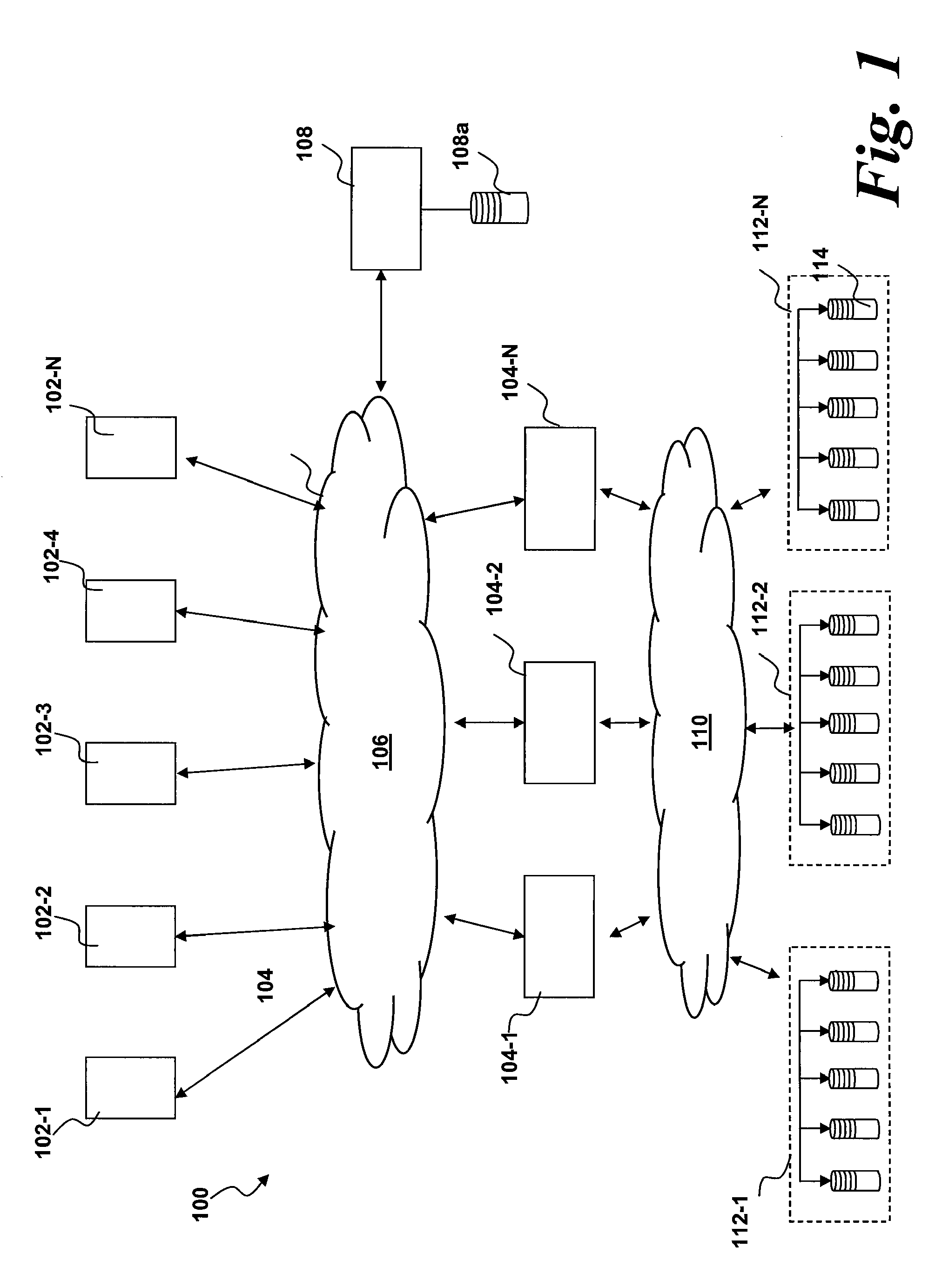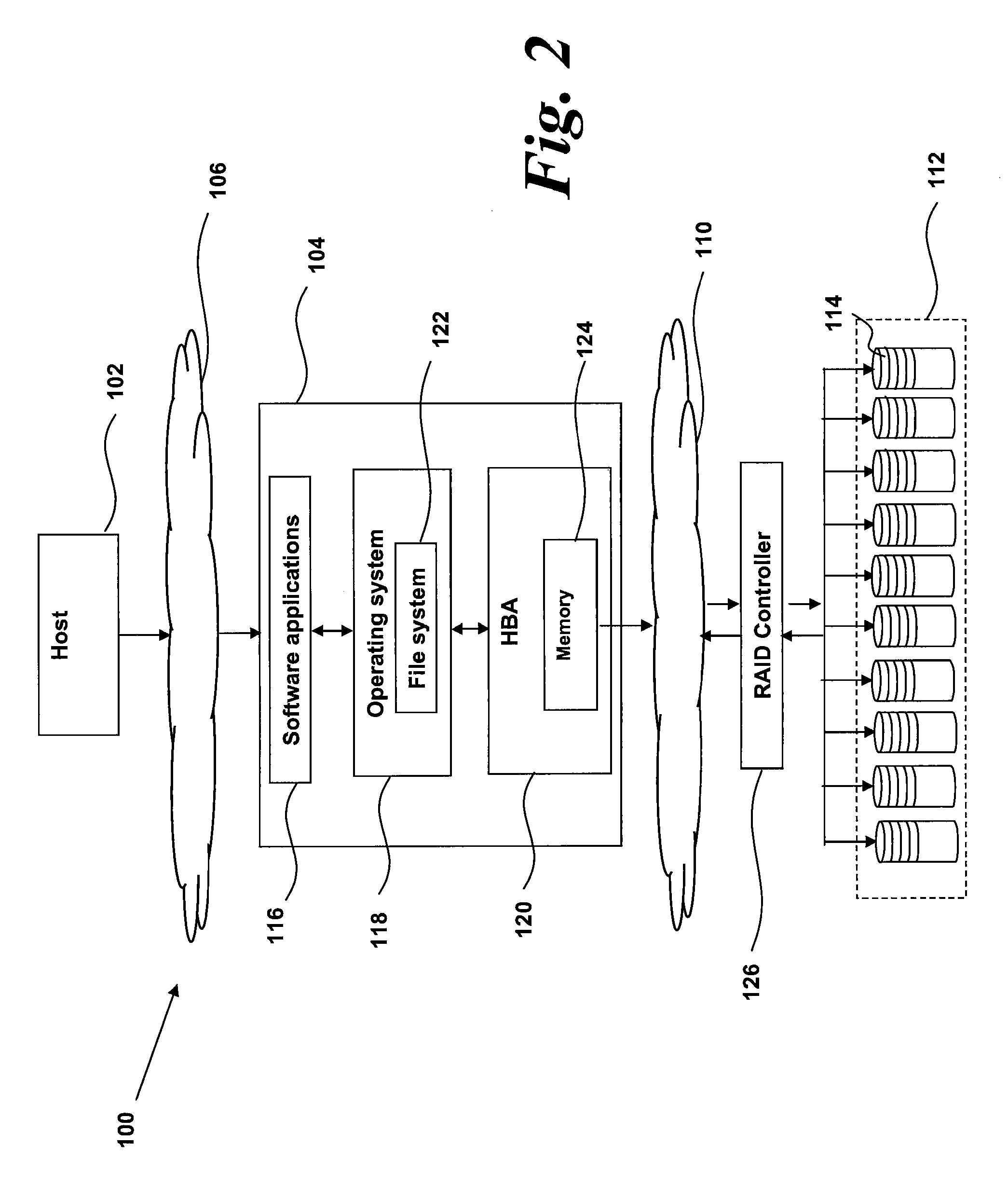Data integrity in a networked storage system
a networked storage system and data integrity technology, applied in the field of networked storage systems, can solve the problems of reducing the performance of the system, t10-dif is only suitable, and the hard disk drive is an electro-mechanical device which is prone to errors and or damage, and achieves high demand for server resources
- Summary
- Abstract
- Description
- Claims
- Application Information
AI Technical Summary
Benefits of technology
Problems solved by technology
Method used
Image
Examples
Embodiment Construction
[0053]FIG. 1 shows a schematic illustration of a networked storage resource 100 in which the present invention may be used. The present invention is illustrated with respect to a parallel distributed file system. However, it is to be appreciated that such a networked storage resource is only one possible implementation of a storage resource which may be used with the present invention.
[0054]The present invention is directed to a networked file system in which the T10-DIF and T10-DIX data integrity protocols can be extended to achieve end-to-end data integrity across the network from host application to storage device.
[0055]The networked storage resource 100 comprises a distributed file system. A distributed file system consists of client 102-1 to 102-N and servers 104-1 to 104-N nodes, connected by a network 106. The servers 104 take the form of OSSes. Client applications, running on client nodes, make storage requests (which may comprise file storage requests) against the distribut...
PUM
 Login to View More
Login to View More Abstract
Description
Claims
Application Information
 Login to View More
Login to View More - R&D
- Intellectual Property
- Life Sciences
- Materials
- Tech Scout
- Unparalleled Data Quality
- Higher Quality Content
- 60% Fewer Hallucinations
Browse by: Latest US Patents, China's latest patents, Technical Efficacy Thesaurus, Application Domain, Technology Topic, Popular Technical Reports.
© 2025 PatSnap. All rights reserved.Legal|Privacy policy|Modern Slavery Act Transparency Statement|Sitemap|About US| Contact US: help@patsnap.com



